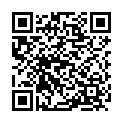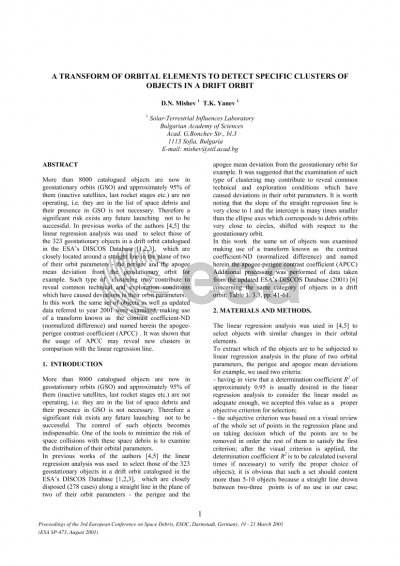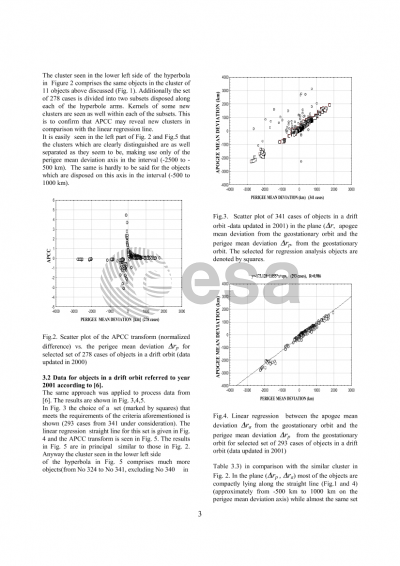Document details

Abstract
More than 8000 catalogued objects are now in geostationary orbits (GSO) and approximately 95% of them (inactive satellites, last rocket stages etc.) are not operating, i.e. they are in the list of space debris and their presence in GSO is not necessary. Therefore a significant risk exists any future launching not to be successful. In previous works of the authors the linear regression analysis was used to select those of the 323 geostationary objects in a drift orbit catalogued in the ESA's DISCOS Database, which are closely located around a straight line in the plane of two of their orbit parameters - the perigee and the apogee mean deviation from the geostationary orbit for example. Such type of clustering may contribute to reveal common technical and exploration conditions which have caused deviations in their orbit parameters. In this work the same set of objects as well as updated data referred to year 2001 were examined, making use of a transform known as the contrast coefficient-ND (normalized difference) and named herein the apogee-perigee contrast coefficient (APCC). It was shown that the usage of APCC may reveal new clusters in comparison with the linear regression line.
Preview





